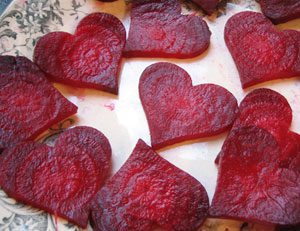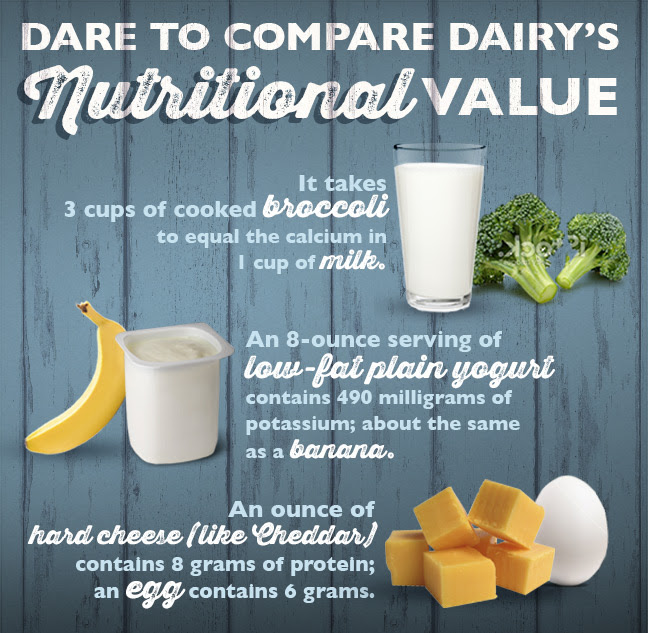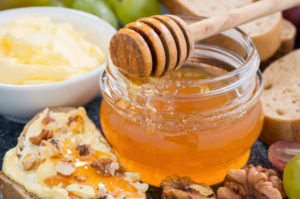WINTER PROGRAM TIPS AND INFORMATION
 Winter procurement can lead to great opportunities when you share Illinois foods that are often overlooked. With fresh and storage crops now depleted, why not promote local honey, dairy, or grains on your menu or in your garden program? Share, promote, and educate your kids about “other” local foods!
Winter procurement can lead to great opportunities when you share Illinois foods that are often overlooked. With fresh and storage crops now depleted, why not promote local honey, dairy, or grains on your menu or in your garden program? Share, promote, and educate your kids about “other” local foods!
TIS THE SEASON FOR A LOCAL CELEBRATION!

 Did you know a large portion of fresh and dried cranberries in November and December are grown in Wisconsin? Feature these holiday gems on the salad bar and in baked goods! Share fun information about how cranberries are grown with your students. Check out the growing process here. Discover Harvest of the Month cranberry facts and recipes here.
Did you know a large portion of fresh and dried cranberries in November and December are grown in Wisconsin? Feature these holiday gems on the salad bar and in baked goods! Share fun information about how cranberries are grown with your students. Check out the growing process here. Discover Harvest of the Month cranberry facts and recipes here.IN DECEMBER, FOCUS ON HEALTHY CELEBRATIONS!
Change the Celebration Focus to Healthier Choices
On the Meal Lines

- New! (Your district name) (your district’s mascot) Ranch Carrot Fries are available today on the lunch line!
- Limited Time Only! (Your district name) (mascot) Fiesta Carrot Fries are available today on a lunch line near you! Add some spice to your holidays!
VALENTINE CELEBRATIONS WITH BEETS!
If your students aren’t eating your Harvest of the Month monthly veggies providing a little fun on your lunch lines and education to improve your customer response could be the boost your program needs! Let’s face it, beets are not an easy sell to school-age children. Building a celebration sprinkled with fun education can influence your students and help to gain acceptance of these earthy beauties!
Here are a few examples of this technique.
- Beets used as a dye: Cutting beets into simple shapes and using them as a stamp is a great way to decorate serving line and cafeteria signage. Fun facts with red beet hearts stamped all around will draw student interest. (photo courtesy of www.parentmap.com)

- Creating temporary tattoos for students in the shape of a red heart that are a safe and fun way to celebrate this dark, red vegetable during February.
- “Will You Beet My Valentine?” This is a fun and inexpensive way to promote your February Harvest of the Month. Create a theme lunch for younger students, such as k-5 with a sweetheart beet promotion!
- “With Every Beet of My Heart” is a wonderful way to tie beets to that popular February holiday! Create signage in the form of giant beet love valentines to paper your wall space using beet stamps cut into the shape of hearts.
- Veggie Love Is In the Air! Utilizing a Valentine theme can provide a fun learning opportunity in the lunchroom and in the classroom. Themed lunch celebrations also increase participation numbers, which is something we can all appreciate!
- “Pickle Me Pink!” Sharing how foods were preserved in the past by serving pickled local beets with a side of education on the preserving process is a sure win. Adding these pickled beauties to a themed Valentine celebration may be the catalyst you need to encourage kids to taste something new. Our Quick Pickled Beets recipe can take the center stage on salad bars, a special mainline salad or in cold sandwich lunches throughout February!
Featured Recipe: Winter Sunset Salad, A beautiful fresh salad with the colors of a winter sunset- a great way to get your students to try beets!
For a colorful and healthy salad try Winter Sunset Salad as your Harvest of the Month recipe! This recipe is rated BASIC for prep skills and utilizes canned mandarin oranges, as well as red or gold beets.
 We have more cold and hot beet recipes including Quick Pickled Beets, Beets and Sweets, and Roasted Balsamic Beets for food service. If you want to avoid the red staining that can occur with Red Ace beets look for Chioggia (Candy Stripe) or golden beets. Chioggia beets, pictured below, have an amazing striped color and a very mild flavor. Golden beets are sweeter than the standard red beet and do not stain surfaces. Either beet makes a delicious and nutritious addition to a cold salad.
We have more cold and hot beet recipes including Quick Pickled Beets, Beets and Sweets, and Roasted Balsamic Beets for food service. If you want to avoid the red staining that can occur with Red Ace beets look for Chioggia (Candy Stripe) or golden beets. Chioggia beets, pictured below, have an amazing striped color and a very mild flavor. Golden beets are sweeter than the standard red beet and do not stain surfaces. Either beet makes a delicious and nutritious addition to a cold salad.
PUT LOCAL DAIRY ON THE MENU!
Did you know?
Illinois dairy farms produced approximately 220 million gallons of milk in 2015. Illinois farms generate more than $334 million in milk sales annually. In Illinois, the average dairy cow produces more than 6 gallons of milk per day. That’s more than 2,340 gallons of milk over the course of a typical year.
 Try a tasty Strawberry Yogurt Banana Split as a breakfast entree!
Try a tasty Strawberry Yogurt Banana Split as a breakfast entree!FEATURED RECIPE: Cheesy Chicken and Zucchini Pasta

Looking for family recipes? Check out Midwest Dairy’s Recipe cache of over 100 dairy- related recipe options here.
FUN FACT: IT’S ALL ABOUT DAIRY!
- Illinois is the 21st largest milk-producing state in the U.S.
- It takes about 48 hours for milk to travel from the farm to the dairy case.
- Illinois has 24 plants that process one or more dairy products.
- The greatest amount of milk produced in one year was 59,298 pounds by a Holstein cow named Robthom Sue Paddy.
- Cows have a very acute sense of smell. They can smell up to 6 miles away.
- To make one gallon of ice cream, it takes 12 pounds of whole milk.
- The most popular natural cheese in the United States is mozzarella.
- Our neighbor to the north, Wisconsin, uses ninety percent of the milk produced in the state for cheese.
- The natural yellow color of butter comes mainly from beta-carotene found in the grass that cows graze on.
NUTRITION FACTS
The perfect winter choice: Honey
 Feature local honey, dairy or grains during the winter months. Check out the Winter Harvest toolbox here.
Feature local honey, dairy or grains during the winter months. Check out the Winter Harvest toolbox here.Did you know?
Minerals and Vitamins Pack a Punch!

Put local Honey on the Menu!

Featured Recipe: Crispy Sweet Brussels Sprouts with Local Honey

FUN FACT: It’s all about honey!
 Bees are the only insect in the world that make food that people can eat.
Bees are the only insect in the world that make food that people can eat.
- Honey contains all of the substances needed to sustain life, including enzymes, water, minerals and vitamins.
- One bee will only make 1/12 of a teaspoon on honey in its entire life.
- A bee’s wings beat 200 times a second, that’s 12,000 times a minute!
- Each colony smells different to bees, this is so they can tell where they live!
- Bees communicate by smells called ‘pheromones’ and by performing special ‘dances’.
- There are 900 cells in a bee’s brain.
- Bees have two separate stomachs; one for food and another just for nectar.
NUTRITION FACTS

How much do you know about grains?
Introduce your students to whole grains!
 Buckwheat is one of the healthiest, nuttiest, most versatile whole grains. And, despite its name, it’s really not related to wheat at all. Buckwheat is actually the seed of a flowering fruit that is related to rhubarb and sorrel. It’s completely gluten-free and unrelated to wheat and all the grasses in the wheat family.
Buckwheat is one of the healthiest, nuttiest, most versatile whole grains. And, despite its name, it’s really not related to wheat at all. Buckwheat is actually the seed of a flowering fruit that is related to rhubarb and sorrel. It’s completely gluten-free and unrelated to wheat and all the grasses in the wheat family.Use Your Flour Power!
Put local grains on the menu!
Featured recipe: Wheat Berry and Apple Salad
 More recipes:
More recipes:
The “why” behind incorporating whole grains into your diet.

- Whole grains have similar amounts and sometimes more disease fighting chemicals than many typical fruits and vegetables!
- Whole grain intake can improve digestive health and help with weight management. Individuals who eat at least 3 servings of whole grains per day reduce their risk of:
- Heart disease by 25-36%
- Stroke by 37%
- Type 2 diabetes by 21-27%
- Cancer of digestive system by 21-43% and hormone related cancer by 10-40%
- Obesity
Fun facts
 People have been eating whole grains for more than 17,000 years – they picked seeds, rubbed off the husks and chewed the kernels raw or boiled them in water.
People have been eating whole grains for more than 17,000 years – they picked seeds, rubbed off the husks and chewed the kernels raw or boiled them in water.- Egyptians used to bury mummies with necklaces made from barley.
- In 1324 King Edward II of England set the standard for the measurement – making the ‘inch’ equal to ‘three grains of barley, dry and round, placed end-to-end lengthwise’.
- One bushel of wheat contains around a million individual whole grain kernels.
- Amaranth is a whole grain that was incredibly important to the Aztecs. So when the Spanish invaded, their leader, Cortez, tried to destroy the Aztecs by not allowing them to grow it – anyone caught was put to death!
- Khorasan grain is a wheat variety that was brought to the US as a souvenir from an Egyptian tomb – it was sold as ‘King Tut’s Wheat’. Now known as kamut, an ancient Egyptian word for wheat, this rich, buttery-tasting wheat is certified organic.
- Quinoa, pronounced ‘keen-wa’, is a whole grain that was highly prized by the ancient Incas – they called it ‘gold of the Incas’.
- Pringles, the popular potato chip, are technically not potato chips but a slurry of rice, wheat, corn, and some potato flakes. Whoa!
- A massive Dutch famine during WWII helped discover celiac disease. Sick children recovered when wheat was scare, but fell ill once they resumed eating gluten.
- Rice does not need to grow in water, but since rice can survive in water, it is planted in it to control weeds and other pests, creating higher yields.
- Humans have fewer genes than rice.
- Quinoa, amaranth, millet, and sorghum can pop like popcorn.
- Corn needs to be cooked in limewater before its nutrients can be absorbed into the human body. While Native Americans knew this, early New World colonial settlers did not, which resulted in many deaths from malnutrition for those who were using it as a staple food.
Nutrition facts

Celebrate Mardi Gras with local grains!

WARM UP! WITH HARVEST OF THE MONTH
The holidays are over and schools are settling back into their routine. It’s time to catch your student customers attention and bring them back into the lunch lines with Harvest of the Month!
Regional/local apples are a winter storage crop and are grown in Illinois, Wisconsin, Michigan, Minnesota, Indiana, and in Missouri, (for our western and southern Illinois schools!). There are two companies selling sliced regional (when available) apples to schools: Richland Hills Farms in Wisconsin and Peterson Farms in Michigan. Check with your produce distributor to order. If you cannot get these products try contacting the companies directly to locate a distributor near you.
Great winter veggies would be any root crop, such as parsnips, sweet potatoes, potatoes, beets, winter/hard squash, such as butternut, carnival and acorn varieties. If you are looking for a fruit, how about dried cranberries? Did you know Wisconsin has produced the largest crop of cranberries — currently, about 59% of the United States’ total production since 1995? 99% of Wisconsin cranberries are sold to Ocean Spray destined to become juice, dried cranberries, and fresh cranberries which are available through the holidays. If you need fun facts, nutrition facts or recipes for a vegetable or fruit that is not listed on the website please contact us!



Featured Recipe: Cranberry Apple Coleslaw, hitting the trifecta of monthly featured foods!
For a colorful and healthy treat try Cranberry Apple Coleslaw as your Harvest of the Month recipe. This recipe is rated Basic for prep skills and has a sweet and tart crunch your students will love!
We have more cold salad recipes including Chicken Salad with Apples & Cranberries, Aztec Grain Salad, and Fresh Waldorf Salad.
Brrr! Looking for a recipe to stave off the winter chill? Try Cranberry Apple Cornbread Muffins or Apple Crisp.

 The
The